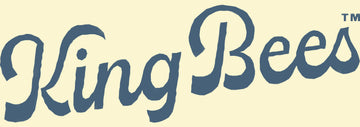Mānuka Honey... what's the difference between MGO and UMF?
Introduction
Choosing the right Mānuka honey can be confusing – especially when faced with different claims and labels, such as MGO and UMF. We love it when people ask us questions, because we are more than happy to share what we know and not everyone is brave enough to ask.
What does MGO mean in Honey?
Mānuka honey has a unique superpower that has many benefits, which is derived from the Methylglyoxal (MGO for short) that has been scientifically proven to support wound healing, but there’s also been research into the other beneficial properties, such as being an antioxidant, anti-inflammatory, antibacterial, and much more.
Unlike regular honey, Mānuka contains high levels of this powerful natural compound. The higher the MGO number on your jar, the more potent the honey.
What is the difference between UMF and MGO?
They’re not rivals. They’re just different ways of measuring the same magic. The Unique Mānuka Factor (UMF) was a grading system created some years ago by the UMF Honey Association to simplify the Mānuka strength (or activity). It’s a trademarked grading system that includes MGO, the powerhouse compound that gives Mānuka its antibacterial bite, plus dihydroxyacetone (DHA) and Leptosperin. Leptosperin is a marker that is only produced by the Mānuka tree and should be above certain levels to allow the claim of being Mānuka. DHA is a compound that is slowly converted to MGO over the life of the honey. The higher the DHA, the more ‘life’ is left. Ideally you’d want more DHA than MGO in your honey, to extend the goodness available to you.
MGO is the raw number that tells you how much of that active compound is actually in the jar, without any additional calculations required.
What do the different grades mean?
MGO 50+ (UMF 3+)
Mānuka blend
This is your tasty, everyday multifloral honey. With a blend of Mānuka and other local flowers, where the antibacterial activity is naturally diluted with other lovely, yummy nectar sources. Ideal for families, kids, and daily enjoyment. Think: daily drizzle, natural sweetener, healthy sugar swap, baking.
MGO 100+ (UMF 6+)
Daily wellness
A step up, this is the start of our monofloral range. It contains enough MGO to support immune health and gut balance, while still tasting smooth and versatile. Great for everyday use when you want more than just sweetness.
MGO 300+ (UMF 11+)
Immunity booster
With stronger antibacterial and anti-inflammatory properties, it helps support the body’s immune system. Perfect for preventative health and seasonal wellness. This is also great for wound care and topical skin applications.
MGO 600+ (UMF 16+)
Potent
This honey is rich and complex. High levels of MGO make it suitable for more targeted health support, including digestion, immunity issues and topical use on skin (think breakouts and masks). Choose this when your body needs heightened immune support.
Which one should you look for when buying?
Considering the different grades available, it really depends on what you want to use it for. Here’s a quick guide:
Everyday honey – enjoy on toast, baking, pancakes, hot cup of tea, anything involving heat we recommend our Everyday range, which includes Coast, Bush or MGO 50+. Your choice will depend on your taste preference, give them all a try.
Coast is light and sweet, Bush is earthy with butterscotch and MGO50+ is a delicious multifloral honey with a hint of Mānuka.
Daily health – if you’re looking for something to take every day that will give you a boost, the MGO 100 is a good starter. If you feel like you’re coming down with something or are unwell, then the MGO 300 will give you that extra lift you need. If you’re really battling, then don’t hesitate to dive into the MGO 600 to maximise the benefits.
Wound Care – For minor skin irritations and wounds, MGO 300 is the way to go. This is where the medicinal value of Mānuka kicks in and the antibacterial power will support skin’s natural healing abilities.
Skin Care / Beauty – A little bit of Mānuka goes a long way and so MGO 600 is fantastic for face masks and general skin renewal. If the honey is a bit thick to apply, you can apply gentle heat (we like a water bath) and it’ll thin out and feel beautiful on your skin. Just be careful not to heat over 70 degrees centigrade or it’ll damage the good activity within.
Conclusion
Whether you look for UMF or MGO, both offer assurance of the activity level in Mānuka. UMF does include some extra parameters, however savvy consumers will do some research before purchasing and will search out who they believe are a trusted brand. And this is important, as you know what is best for you. Don’t be shy and ask questions if it's not immediately clear... we’re here to help. We prioritise bee welfare and honey quality throughout the entire process, so you can be sure that you’ve got the best.


